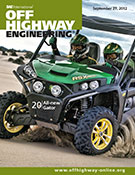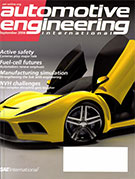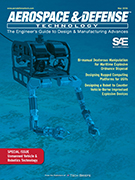Magazine

SAE Truck & Off-Highway Engineering: October 2022
2022-10-06
eAxles gain traction OEMs are developing and testing axles with integrated electric powertrains to electrify trucks of all sizes. Securing CAN networks in commercial vehicles A CAN transceiver with built-in security functions can avoid the complexity of end-to-end security solutions that are especially hard to implement on CVs. Electrification is the future for defense vehicles Despite infrastructure challenges, electrified and automated military vehicles will save fuel and lives, said Allison's VP of Defense Programs at SAE COMVEC 2022. Editorial Hiring talent to meet high-tech demands Allison's now open for hydrogen testing Electrification's impact on commercial-vehicle chassis design Harbinger prepares to enter commercial market with novel eAxle ZF, Freudenberg developing integrated 'Powerpack' fuel cell and e-drive Freightliner's medium-duty makeover for M2 and SD models Toyota's hydrogen fuel-cell powertrain provides an electrifying ride


















